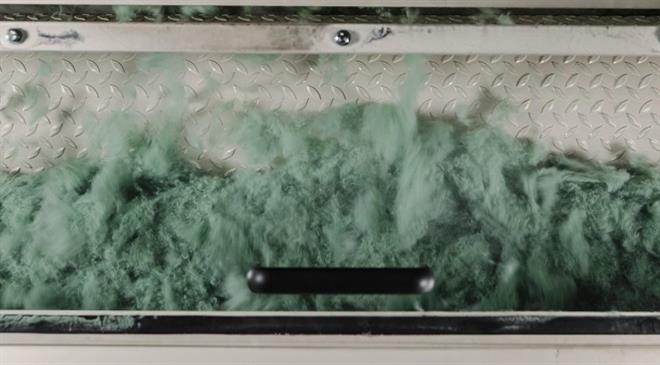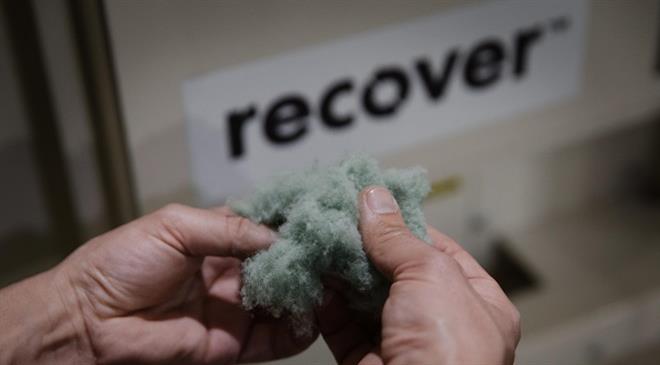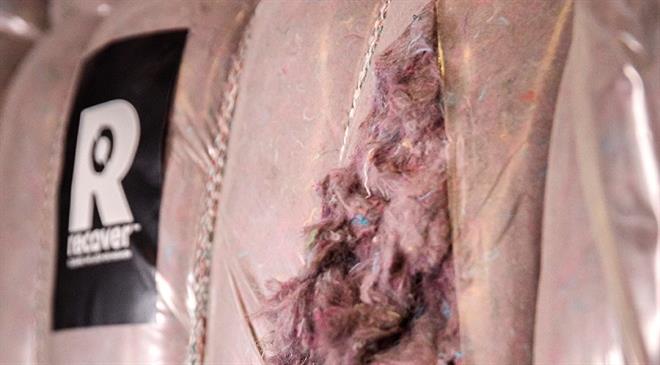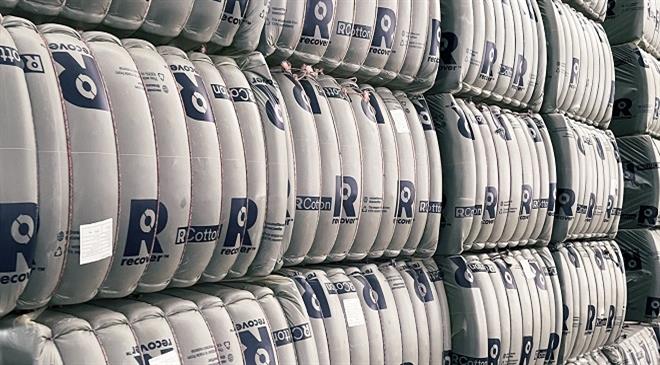We aim for recycled cotton to become sustainable alternative to virgin cotton
Recover offers recycled fibre product ranges that enable the industry to achieve circular fashion for all. The Spain-based company has perfected the art and science of handcrafting sustainable recycled cotton fibre over 70+ years, and offers a scale solution to transform textile waste into low-impact, high-quality sustainable recycled fibre. Recover’s Senior VP – Marketing Boris Mercier speaks to Fibre2Fashion about recycled cotton fibre.
What is the market for recycled fibres globally and in Europe? Has this figure grown in the last few years? What is Recover’s market share in it?
Overall, the market for recycled fibres is in a boom worldwide. Many brands have set ambitious goals for the coming years across their entire businesses. When it comes to sourcing their materials and the need for more sustainable options, recycled cotton is one of the best options to reach their goals. In general, brands are under increasing pressure to move to a more circular economy.
On March 30 this year, the European Commission published the EU Strategy for Sustainable and Circular Textiles. It is the first step to a circular European fashion landscape, and it includes requirements that brands will have to consider in their local strategy. Some key highlights are the new requirements in terms of Eco-Design, including minimum uptake of recycled content or discourage the destruction of unsold products or textiles. The strategy also includes waste management policies and prioritises fibre-to-fibre recycling.
Recover, with its low-impact and high-quality recycled cotton is a strong ally to achieve these new requirements and can assist brands and retailers in closing the loop on fashion.
What are the challenges specific to recycling cotton?
Dealing with ‘waste’ resources as a raw material is a challenge on its own. We are dealing with more variation and quality differences among our input material than you would have with homogeneous virgin raw material inputs. With mechanical recycling of cotton, what you put in is what you get out. Control and traceability is key, especially for post-consumer feedstock (used garments).
Recover, as high value fibre-to-fibre recycler has very specific needs with regards to sorting and preparing this feedstock and there currently is a big technology and capacity gap in the market to fulfil those needs. These are challenges that we cannot solve alone. For this reason, we are partners in several industry initiatives like Accelerating Circularity Project and the ReHubs initiative, to help build the circular supply chains and infrastructure that we need to scale these circular practices.
Some challenges are also of a regulatory nature. Global systems and regulatory frameworks are still mostly finetuned to linear supply chains and based on the trade of virgin resources. Regulations and trade barriers with regards to ‘waste’ will need to be adjusted to foster circular practices that do not consider these resources to be waste at all, but rather (secondary) raw materials. If we want to move to a circular textiles system, which includes the scaling of recycled cotton, then we need to remove some of these barriers and put in place incentives for circularity, not only within Europe but at a global level.
There are of course more challenges we are facing in the transition from linear to circular that are not specific to recycled cotton. A lack of traceability and transparency in the supply chain being one. As a frontrunner in sustainability, we aim to be agents of change in tackling these challenges as well and we work closely with Reverse Resources and with the Circular Fashion Partnership to support bringing traceability to the textiles waste supply chain for example.
We are thankful to be part of some great projects and to work with so many amazing partners to establish and scale concrete circular solutions. Because we understand very well that our mission to ‘achieve circular fashion for all’ is not one that can be achieved over night, nor alone.
What are the current applications for Recover fibres? Where do you see prospect growing?
Recover fibre has infinite applications delivering RCotton, RCotton blends and RColorBlend for both open end and ring spun for high performance. We are currently working with a wide variety of brands from home textiles to high street fashion, to create high-quality products.
How is the demand for sustainably recycled cotton fibre versus recycled polyester fibres?
Recycled polyester currently has a bigger market share than recycled cotton. In 2020, 7.8 per cent of the global fibre production was recycled polyester and only 0.3 per cent was recycled cotton. What is important to note about recycled polyester though, is that most of the recycled polyester in the textile sector currently does not come from recycled garments but from bottles. It is great to have this lower impact recycled polyester in the market, however, to achieve circularity in textiles we need scaled fibre-to-fibre recycling solutions for polyester textiles. Ideally, the recycled polyester fibres of the future should come from recycled polyester garments, a notion also supported by the new EU strategy for Sustainable and Circular Textiles.
It has taken some time for recycled polyester to gain this market share as it took time for the supply chain and consumers to understand and accept it. Now it has become a very normal and even desired alternative to virgin polyester. We expect the same to happen to recycled cotton. With more and more big retailers and brands introducing recycled cotton products and communicating about it, awareness, acceptance and appetite will grow, and we aim for recycled cotton to become the sustainable alternative to virgin cotton, alongside organic. And of course, we expect Recover to become a consumer recognised and trusted brand of recycled cotton.
On top of that, many brands have set goals to have 100 per cent sustainable cotton by 2030, and with limited availability of organic cotton, recycled cotton is quickly becoming another preferred route to achieve these targets.
Finally, the introduction of Eco-Design regulation and Extended Producer Responsibility schemes for textiles, is expected to create mandatory targets for recycled content in products, which would bring another increase in demand. Even though recycled cotton is still very much a niche fibre now, the surge in demand we already observe from the market, and which we foresee only growing larger in the future, is a great opportunity and driver of Recover’s motivation to scale up.

What is your recycling capacity? What kind of technology is being used to do so?
Recover is investing globally to increase recycling capacities. We want to achieve maximum output by being where the waste is, thereby close to both supply and demand and reducing simultaneously our carbon footprint. Our recent partnership with STORY3 Capital brings significant investment and resources to achieve our goal of increasing production capacity to 200,000 metric tons of recycled fibre per year by 2025.
The Recover process falls under mechanical recycling of textile waste and through our complex proprietary system, we can process textile waste, remove external elements, and shred it back into maximum quality fibre.
Our 70 years old history and expertise gives us a strong competitive advantage in maintaining the quality and length of the Recover recycled cotton fibre.
After opening a facility recently in Bangladesh, do you plan to expand in the next 2-3 years? Please share a few details.
We are investing greatly in the growth of the company with the objective to scale the production of recycled fibre to meet surging demand. To achieve this, we are opening new manufacturing facilities around the world.
We have just opened our first facility in Bangladesh, in alliance with our partners Beximco, and to reinforce our presence, we will open a second hub in Dhaka in 2022. The new facility will come fully equipped with a Recover RColorBlend installation, our proprietary technology to provide fibre blends with colour, at a lower environmental cost.
We are also working hard with Artistic Denim Mills (ADM), our partner in Pakistan, to scale the use of recycled cotton from post-consumer denim.
We have plans to expand Recover’s presence in Asia with a new facility in southern Vietnam, with this facility being vital to support the Southeast Asian market.
Operations in Spain will also be expanded with greater investment in product development. Further we will look to establish strategic alliances, like the strong one we have with Happypunt, and business partnerships globally.
We also continue to join with actors in the industry to put in place infrastructure to help scale the recycling of pre- and post-consumer waste (PCW) textiles and invest in long-term purchasing agreements worldwide to lockup waste supply. We aim to have PCW represent up to 40 per cent of our inputs by 2025 to tackle the post-consumer textile waste crisis.

What is the brand positioning of Recover?
We’re building Recover as an ingredient brand instead of a simple product component within the supply chain. We believe we have a role in educating the final customer on their importance to achieve a more sustainable fashion industry.
Over the last 12 months and through various collaborations with leading brands such as Primark, DL1961, Revolve and C&A, Recover has positioned itself as the ingredient brand of recycled fibres. By partnering with big high street names, we have had a large-scale impact and brought affordable and trendy sustainable clothing options to the high street.
As part of our collaborations, we associate the brand and Recover through various touchpoints to enhance the sustainable value of the brands products. We provide our brand partners cobranded hangtags, labels, POS displays and landing pages, sharing Recover’s saving and process information via QR code with their customers. We generate an impact on consumer’s behaviour through a strong message focused on the savings generated by using recycled cotton and reinforce the awareness of the collaboration within the home of the final customer and during the whole lifespan of the garment.
What is the amount of energy and water used for recycling cotton fibre?
Recover’s recycled cotton alternative reduces the need to cultivate virgin cotton, thus avoiding climate impacts associated with cotton production, including the use of water, land, pesticides, and fertilisers.
According to the Higg Material Sustainability Index and results calculated using the Higg MSI V3.3, the global warming potential of Recover recycled cotton is almost 10 times less than virgin conventional cotton.
In addition, recycling coloured textile resources into coloured fibres and yarns through our proprietary Recover RColorBlend system eliminates the need for dyeing downstream, reducing the amount of water and potentially harmful chemicals used. On top of that, as landfill waste, including textiles, release greenhouses gases (GHGs), a recycling programme that keeps textiles out of landfills has an added positive climate impact.
In 2021 alone, Recover made the following environmental savings based upon the textile waste that we recycled and turned into cotton fibre:
- Water: 114.3 million cubic metres
- CO2 emissions: 180,892 metric tons
- Energy: 451,152 MWh
- Land use: 8,126 ha
- Waste saved from landfill: 7,424 metric tons
These results were calculated by Recover using Recover’s LCA study, verified by AITEX, Universitat de València and UNESCO.
Which brands and companies utilise Recover’s fibres?
We work with a wide range of brands and retailers to incorporate our fibre into their products. Some of our most recent partnerships include Revolve, Primark, DL1961 and C&A, and we have many more exciting partnerships in the pipeline.

How are your brand communications unique?
Through our communication, we are approaching things in a new way. Recover addresses the need for transparency and increased consumer education and engagement by aspiring to be the voice and leader to the consumer on recycled cotton, sustainability, and circularity. We engage with consumers who have little knowledge on the consumptive nature of fashion and educate them on the benefits of a circular economy.
Within our communications, both on our social media and brand/retailer collaborations, we provide inspirational messaging with the aim to ‘Empower the consumer to participate in saving the planet’. We are building a fully integrated communication along the entire value chain, from the start of the recycling process with the branding of the machines, to the clients themselves through the hangtags and POS brand visual assets, focusing on education, and how the supply chain, brands and consumers can act together to achieve circular fashion for all.
Through QR codes we take consumers to a dedicated landing page on Recover’s website with more information about our sustainability data and goals and that of the brand. We have also shown great creativity in translating our environmental savings and the benefits of our recycled fibre into easily understandable concepts for the consumer. For example, 1 kg of Recover recycled cotton saves up to 14,470 litres of water, which we communicate to the consumer as 250 showers or 13.5 years of drinking water for one person.

What does the future hold for circular fashion? Will it be able to match fast fashion?
Although fashion apparel companies have taken steps towards environmental and social sustainability practices, we can do more, and it is important that we continue to set targets in energy, chemicals, and waste savings. Dedicating resources and budgets is just the beginning to create real change and impact, and real change will require all the fashion companies to join forces with suppliers throughout the value chain and close the gap.
How cost-effective is using recycled cotton fibre versus virgin cotton fibres?
Recover fibre is a cost-effective plug-and-play solution. We ensure that our fibre is priced competitively against virgin cotton fibres and other alternatives to make our product available to as many brands as possible to achieve circular fashion for all.





